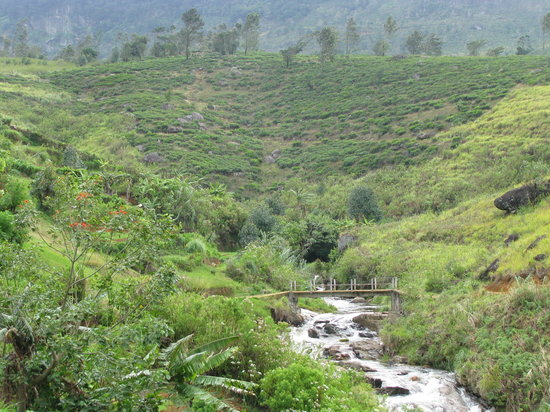YAPAHUWA
Yapahuwa is located a little way off the Kurunegala-Anuradhapura road, in the Wayamba province of Sri Lanka. Of all the ancient ruins in the country the Rock Fortress Complex of Yapahuwa is considered to be quite remarkable despite the fact that it isn't famous among most visitors. However, it is renowned as one of the best archeological site in the country. It is even rumored to be more significant than The Rock Fortress in Sigiriya.
Yapahuwa was the seat of govt. in the 13th century. The rock here rises abruptly to a height of about 200 meters. On the south and east sides of the rock, the land has been build up into terraces and retained by walls, to gain to summit. Subha or Subhapabbota occupied the rock for purposes of military strategy. From here he was able to check Magha's (1215-1236A.D) forces from proceeding southwards. Magha of Kalinga led an invasion of the Island with nearly 24,000 solders. Later (1272-1284 A.D) Bhuvanekabahu made Yapahuwa his capital and transferred the Sacred Tooth Relic of the Buddha from Dambadeniya to Yapahuwa. Two sets of moat and rampart gird the rock. Between the outer and inner ramparts was the outer city
Following the decline of polonnaruwa kingdom, the capital of Sri Lanka was shifted to Yapahuwa by King Buwanekabahu the first. The palladium of the Sinhalese Buddhist nation, the sacred tooth relic of Buddha was enshrined within the newly built temple at the Yapahuwa. However Yapahuwa too once again fell to the marauding Dravidian invaders from Southern India. After the death of Buwanekabahu the first, the Pandayan marauders invaded the island once again, pillaged the kingdom of Yapahuwa and carried the Sacred Tooth Relic of Buddha to the Pandayan Kingdom.
The successor to Buwanekabahu the first, King Parakkramabahu the third (1287–1293) having visited the Pandayan court in Southern India in 1288, secured the Sacred Tooth Relic, the palladium of the nation, once again, to the great relief of the Sinhalese.

The rough path to the top of the rock is a steep climb. At the top of the hill are caves inhabited by ascetic monks for centuries before
became the capital of Sri Lanka.
Yapahuwa is located a little way off the Kurunegala-Anuradhapura road, in the Wayamba province of Sri Lanka. Of all the ancient ruins in the country the Rock Fortress Complex of Yapahuwa is considered to be quite remarkable despite the fact that it isn't famous among most visitors. However, it is renowned as one of the best archeological site in the country. It is even rumored to be more significant than The Rock Fortress in Sigiriya.
Yapahuwa was the seat of govt. in the 13th century. The rock here rises abruptly to a height of about 200 meters. On the south and east sides of the rock, the land has been build up into terraces and retained by walls, to gain to summit. Subha or Subhapabbota occupied the rock for purposes of military strategy. From here he was able to check Magha's (1215-1236A.D) forces from proceeding southwards. Magha of Kalinga led an invasion of the Island with nearly 24,000 solders. Later (1272-1284 A.D) Bhuvanekabahu made Yapahuwa his capital and transferred the Sacred Tooth Relic of the Buddha from Dambadeniya to Yapahuwa. Two sets of moat and rampart gird the rock. Between the outer and inner ramparts was the outer city
Following the decline of polonnaruwa kingdom, the capital of Sri Lanka was shifted to Yapahuwa by King Buwanekabahu the first. The palladium of the Sinhalese Buddhist nation, the sacred tooth relic of Buddha was enshrined within the newly built temple at the Yapahuwa. However Yapahuwa too once again fell to the marauding Dravidian invaders from Southern India. After the death of Buwanekabahu the first, the Pandayan marauders invaded the island once again, pillaged the kingdom of Yapahuwa and carried the Sacred Tooth Relic of Buddha to the Pandayan Kingdom.
The successor to Buwanekabahu the first, King Parakkramabahu the third (1287–1293) having visited the Pandayan court in Southern India in 1288, secured the Sacred Tooth Relic, the palladium of the nation, once again, to the great relief of the Sinhalese.

The rough path to the top of the rock is a steep climb. At the top of the hill are caves inhabited by ascetic monks for centuries before
became the capital of Sri Lanka.












